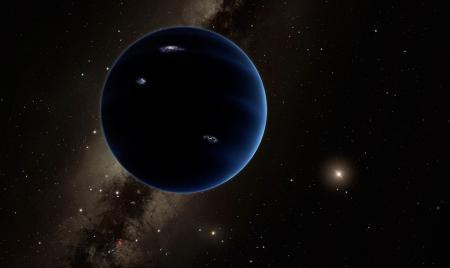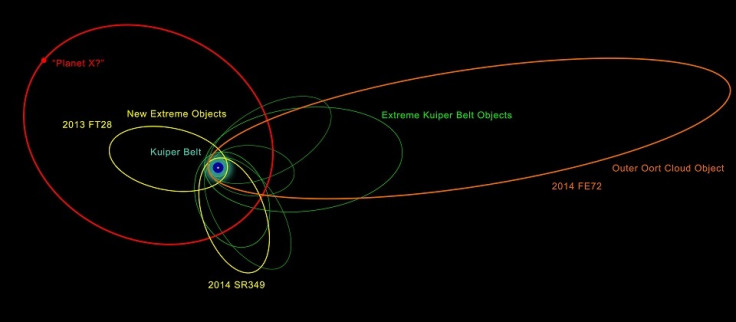Planet 9 could be harbinger of destruction for Solar System's gas giants when Sun dies
Astronomers hunting the hypothetical Planet Nine say they are 80% sure it exists.
Planet Nine – the massive object potentially sitting at the edge of the Solar System – could lead to the destruction of the gas giants when the Sun dies seven billion years from now. Astrophysicist Dimitri Veras has said under certain conditions, the hypothetical planet could be dragged into the Solar System, creating a pinball effect that would lead to the destruction of Jupiter, Saturn, Uranus or Neptune.
Scientists have long considered the idea that there is a ninth, unknown planet sitting right at the edge of the Solar System, but evidence has been lacking. In January, however, researchers from Carnegie Institution for Science announced the discovery of a group of objects with unusual orbits – the presence of a massive planet would explain.
Since then, researchers have been carrying out various simulations to establish how (if it exists) it got there and what impact it could have on the Solar System in the future. Veras, from the University of Warwick, used a model that simulated the death of planetary systems to map out the different positions in which Planet Nine could change the fate of the Solar System.
Under current models, when the Sun dies it will inflate, consuming the inner planets including Earth. However, the gas giants will be spared this fate, instead being pushed out to a safe distance. If Planet Nine exists, this is not necessarily the case, Veras found.

In his study published in the Monthly Notices of the Royal Astronomical Society, Veras said if it was massive enough and has an orbit far enough away from the Sun, Planet Nine could be dragged closer in, disrupting the other remaining planets and – most likely – pushing at least one of them outwards to a violent death.
Veras said: "The existence of a distant massive planet could fundamentally change the fate of the solar system. Uranus and Neptune in particular may no longer be safe from the death throes of the Sun. The fate of the solar system would depend on the mass and orbital properties of Planet Nine, if it exists."
His findings come as scientists from Carnegie's announce several more objects with extreme orbits that could help astronomers pinpoint Planet Nine's location. Scott Sheppard and Chadwick Trujillo, from Northern Arizona University, have submitted their latest findings to the International Astronomical Union's Minor Planet Centre for official designations.

Sheppard said: "Objects found far beyond Neptune hold the key to unlocking our Solar System's origins and evolution. Though we believe there are thousands of these small objects, we haven't found very many of them yet, because they are so far away. The smaller objects can lead us to the much bigger planet we think exists out there. The more we discover, the better we will be able to understand what is going on in the outer Solar System."
"We are now in a similar situation as in the mid-19th century when Alexis Bouvard noticed Uranus' orbital motion was peculiar, which eventually led to the discovery of Neptune."
Speaking to Space.com, he added: "If you want to put a number on it, I'd be somewhere like 80% sure that there's a Planet X out there. I don't think it's a slam dunk; it's not 100%, because it's such low-number statistics. But there are a lot of strange things that seem to be going on that would be explained quite well with there being some kind of massive planet out there."
© Copyright IBTimes 2025. All rights reserved.






















